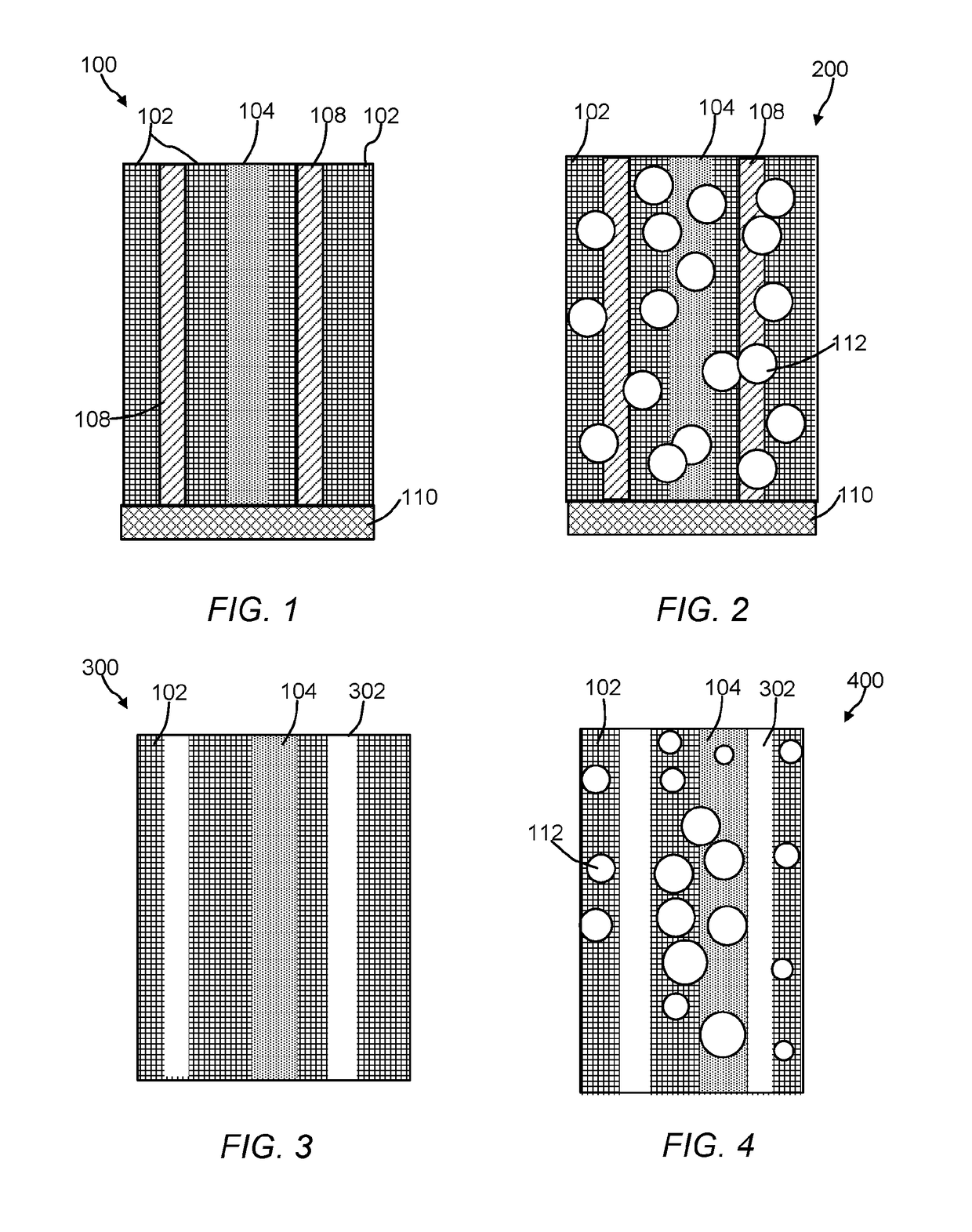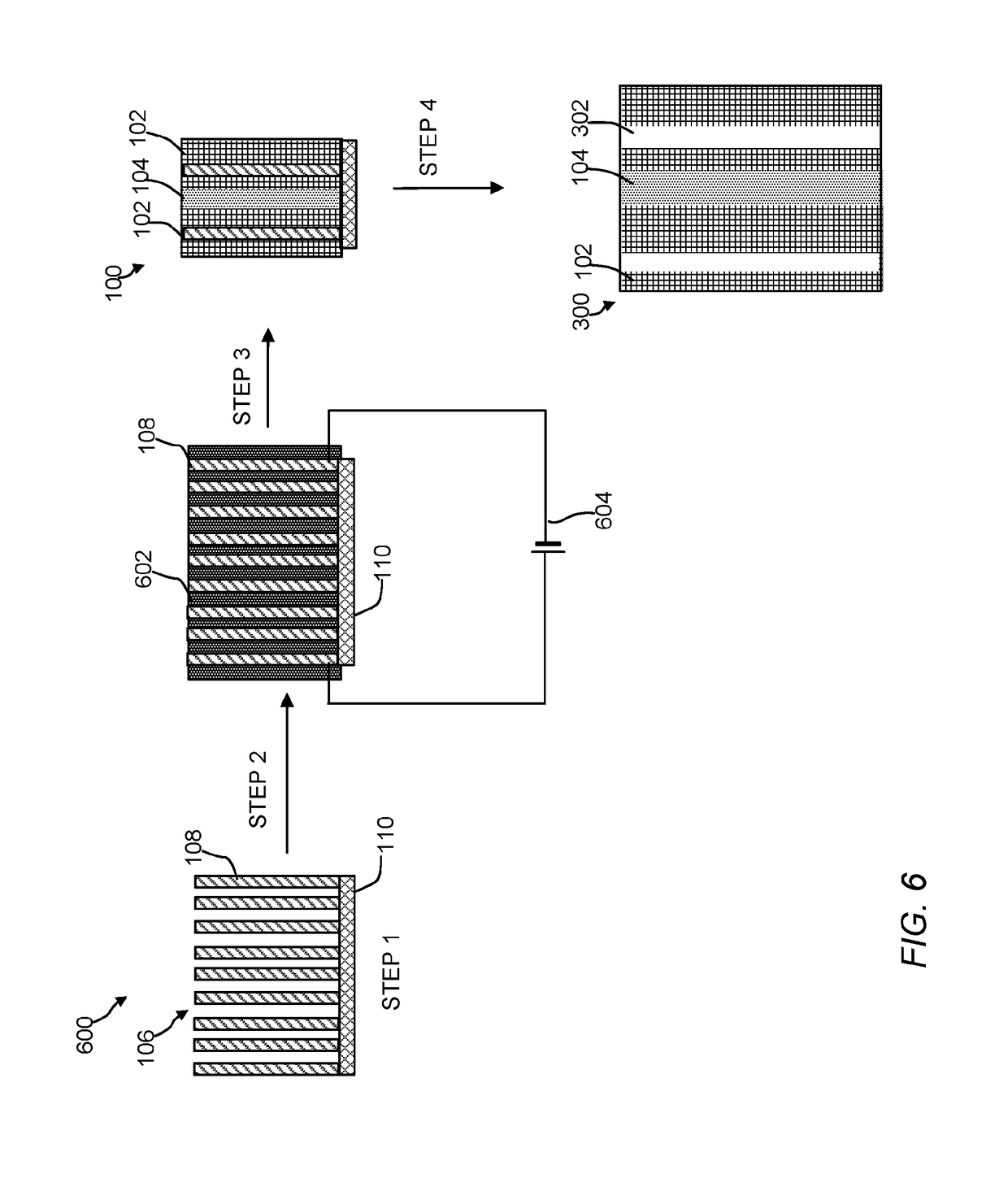Porous polymer nanocomposites with ordered and tunable crystalline and amorphous phase domains
a polymer nanocompositivity and crystalline technology, applied in the field of polymeric materials, can solve the problems of poor electrical conductivity, poor reversibility of polymer structure, poor crystallization degree, etc., and achieve the effect of increasing the crystallization degree and increasing the temperatur
- Summary
- Abstract
- Description
- Claims
- Application Information
AI Technical Summary
Benefits of technology
Problems solved by technology
Method used
Image
Examples
example 1
Semi-Crystalline Polymer Impregnated Materials—General Procedure
[0084]Polymeric material containing joule heaters were fabricated by putting a droplet of silver paint on copper wire placed at the edge of the semi-crystalline polymer film containing joule heaters made by embedding sliver nanowires (Ag NW (SNW)) in the surface of a 3.5 cm×3.5 cm polymer film. The heaters had a resistance of about 30-35 Ω / square). The dimensions of the polymeric material with joule heaters were kept fixed for all the experiments. The supported material had a thickness of 60 microns or 150 micron. FIG. 8 is an image of a polymeric material containing joule heaters (film heater). A multi-meter was used to check the resistance of the electrode. DC voltage (2V-28.8 V) was applied for a specific duration (1 hr to 24 hr) to the film heater through a copper contact at the film edge and the current and resistance were monitored. The samples were characterized before and after joule heating, using SEM, DSC, FTI...
example 2
Semi-Crystalline Polymer Impregnated Materials with Nanoparticles—General Procedure)
[0085]Following the procedure described in Example 1, samples with nanowires and nanoparticles (150 to 200 nm diameter) were prepared. These samples are designated (SNW-150) Silver nanowires and nanoparticles were spray-coated onto a polymer film. After drying, the film was inverted on a hot plate (silver nanowires & particles are in contact with the hot plate surface) at the desired temperature, followed by rolling with a steel rod. The samples were characterized before and after joule heating, using SEM, DSC, FTIR, optical microscopy, AFM and XRD. Table 1 lists the sample number, and sample description (e.g., polymer and silver nanowire (SNW) having a short length of 10 to 20 μm or a long length of 30 to 40 μm in length. Table 2 lists samples, and voltage and current conditions for the Joule heating. After applying voltage on the samples, it was observed that shrinkage and contraction of the polyme...
example 3
XRD Characterization
[0086]XRD analysis was conducted to determine the degree of crystallinity after applying Joule heating. The degree of crystallinity (xc) can be represented by the following equation.
xc=IcrystallineIcrystalline+Iamorphous
where Icrystalline and Iamorphous were determined from the area under their respective curves in the XRD pattern. Table 3 lists the degree of crystallinity for various samples at 0 V, 5 V, and 2 V.
TABLE 3DurationVoltage (V)SAMPLE #XC(h)5 and 210.641 and 1020.6205 and 280.0993 and 3090.1200110.683 minutes0120.663 minutes5 and then 2130.651 at each voltage5 and then 2 (twice before and140.641 at each voltageafter softening)5 and 2150.654 and 4
PUM
| Property | Measurement | Unit |
|---|---|---|
| Fraction | aaaaa | aaaaa |
| Fraction | aaaaa | aaaaa |
| Fraction | aaaaa | aaaaa |
Abstract
Description
Claims
Application Information
 Login to View More
Login to View More - R&D
- Intellectual Property
- Life Sciences
- Materials
- Tech Scout
- Unparalleled Data Quality
- Higher Quality Content
- 60% Fewer Hallucinations
Browse by: Latest US Patents, China's latest patents, Technical Efficacy Thesaurus, Application Domain, Technology Topic, Popular Technical Reports.
© 2025 PatSnap. All rights reserved.Legal|Privacy policy|Modern Slavery Act Transparency Statement|Sitemap|About US| Contact US: help@patsnap.com



